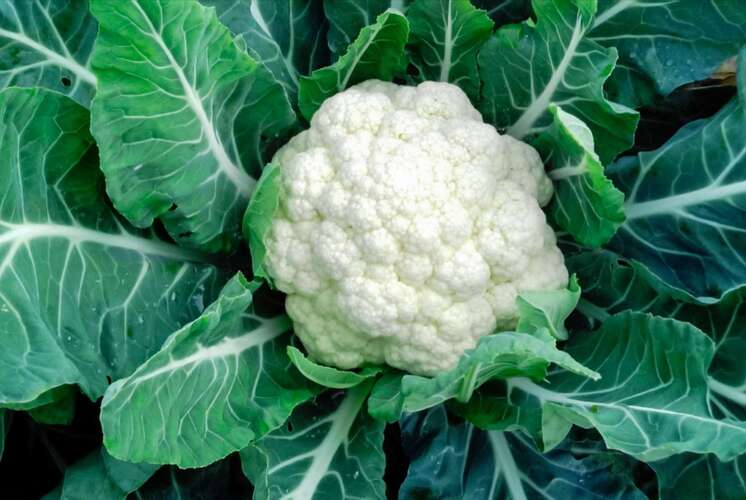Cauliflower

Cauliflowers are annual plants that reach about 0.5 metre (1.5 feet) tall and bear large rounded leaves that resemble collards (Brassica oleracea, variety acephala). As desired for food, the terminal cluster forms a firm, succulent “curd,” or head, that is an immature inflorescence (cluster of flowers).
Cauliflower is rich in vitamin C which is good for skin, healing, and gum health. It is a cruciferous vegetable which helps prevent colon cancer. Cauliflower means “cabbage flower” because it is a flower that has not fully developed. Cauliflower is related to broccoli, Brussel sprouts, and cabbage.
Cauliflower (B. oleracea, familia Brassicaceae) is rich in vitamins K and C and fiber (dos Reis et al., 2015). Like other cruciferous vegetables, cauliflower glucosinolates help to prevent the formation of certain types of cancer and their treatment (Popolo et al., 2017).
